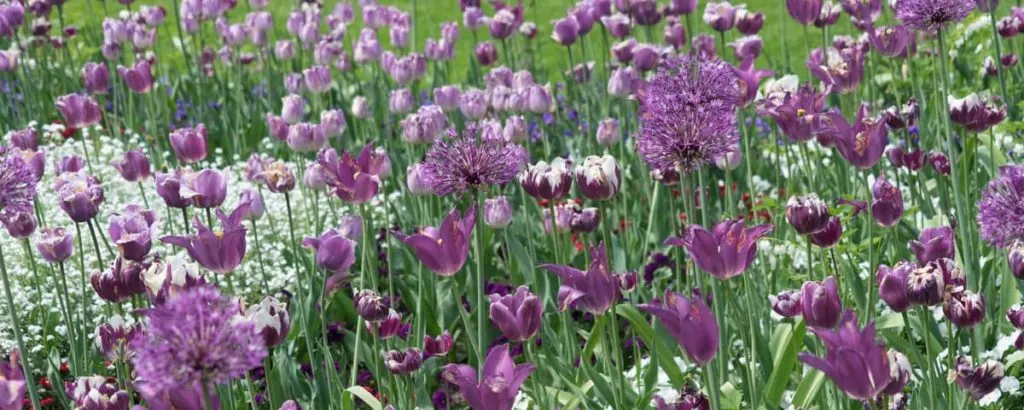
Ornamental onions or allium bulbs create an exceptional finale to the parade of spring-flowering bulbs.
Bold and brave allium flowers make a dazzling display.
They bridge the gap between spring flowers and summer-blooming annuals, bulbs, and perennials.
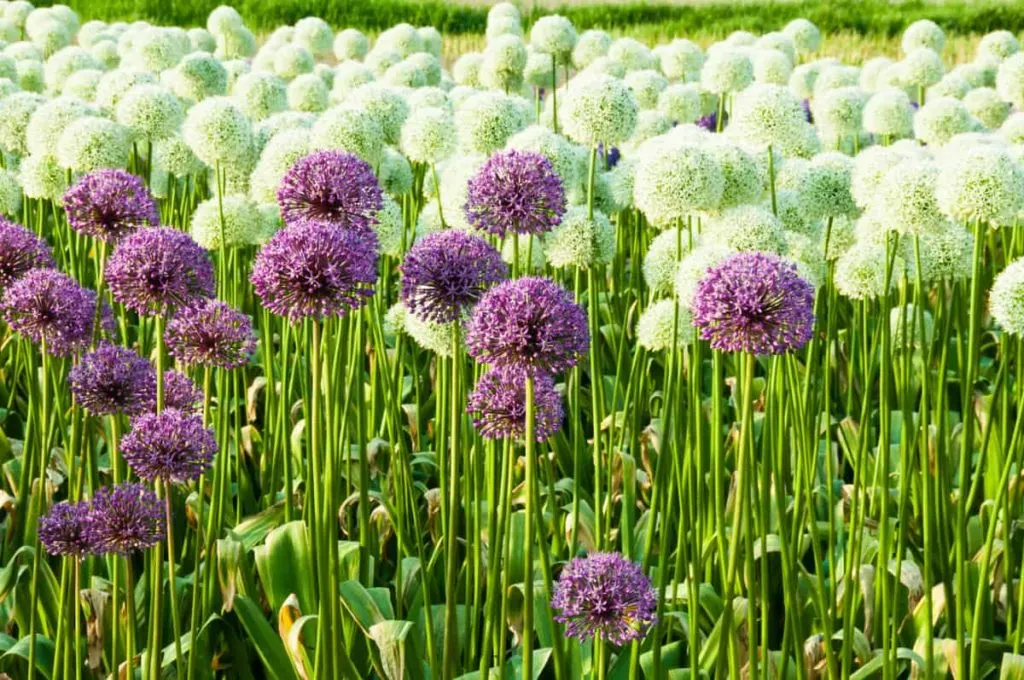
Plant in Fall for Unique Globe-Shaped Blooms In Late Spring to Early Summer
Planted in the fall, allium bulbs arrive in late spring to early summer in shades of white, pink, purple, blue, and mauve.
Create a succession of long-blooming, globe-shaped, ornamental onion flowers.
They arrive in a wave of available heights ranging from 6 inches to 4 to 6 feet tall.
Blooming ornamental onions will have the neighbors talking with their eye-catching and long-lasting pom-pom-shaped blossoms.
Left in place, allium bulbs may naturalize, creating clump-like colonies with flower displays that get better and better each year.
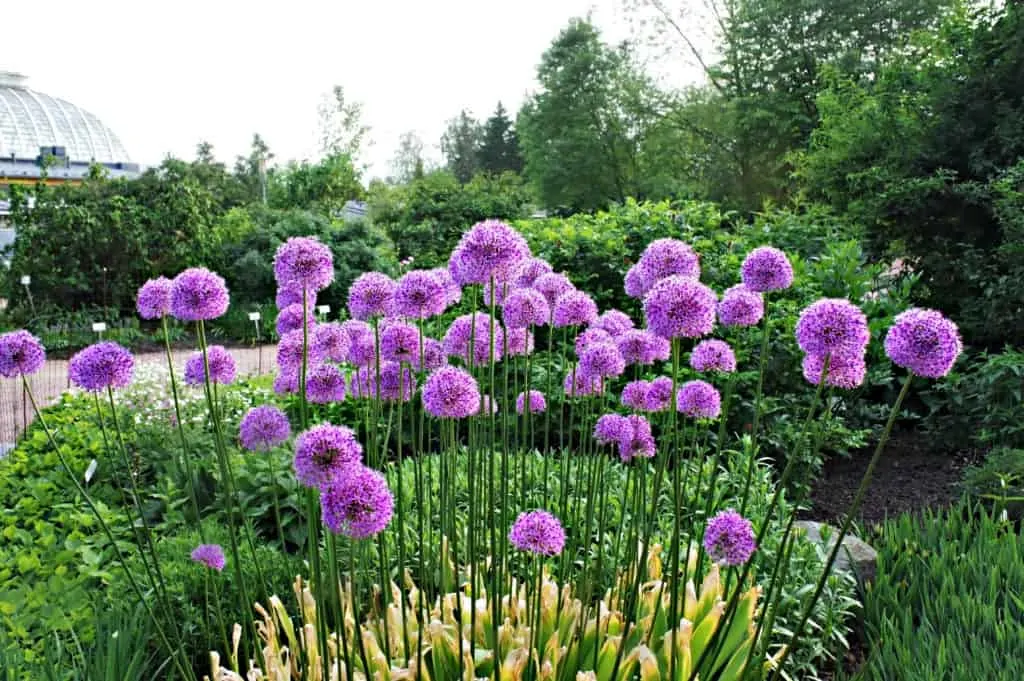
5 Reasons to Grow Ornamental Onion
- Adored by beneficial insects, pollinators, and bees
- Surprisingly delightfully scented
- Deer, rabbit, and rodent resistant
- Gorgeous and durable cut flowers
- Dry for crafts & dried flower arrangements

How To Plant Allium Bulbs in Fall
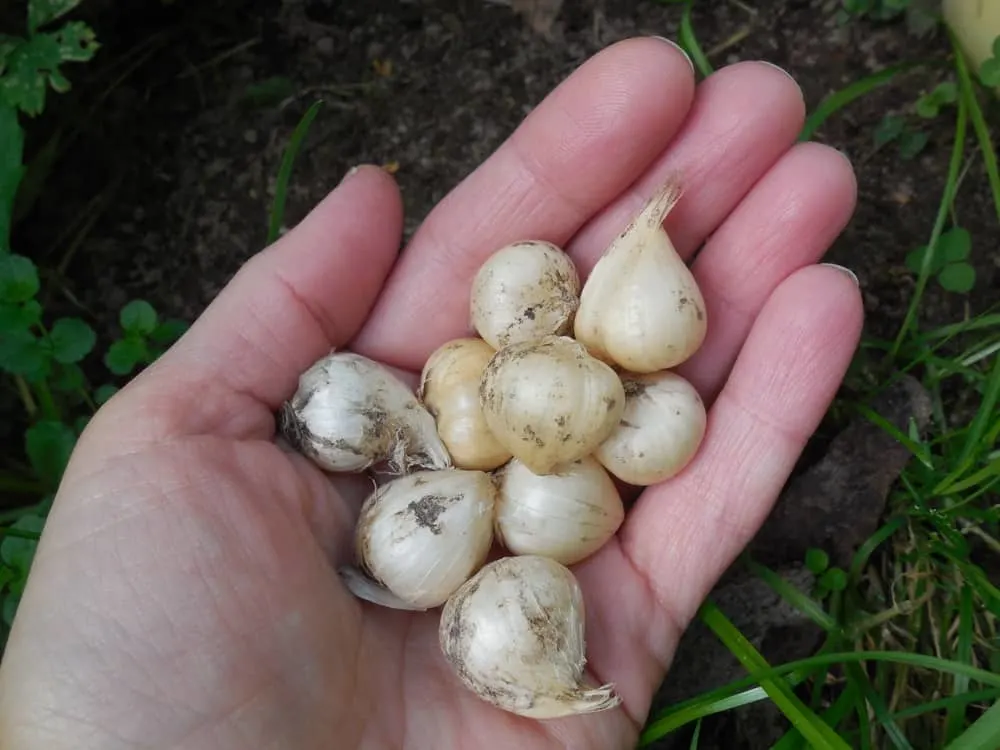
- Plant in fall (September, October, November) about 4 to 6 weeks before the ground freezes.
- Choose a location in full sun to part shade. For prolific blooms, 6+ hours of full sun is recommended.
- Soil must be free draining because allium bulbs may rot in soil that remains damp or wet.
- Plant bulbs singly or in groups. Larger flower heads may make a great statement popping up in the perennial border all on its own or in small groups. For small- and medium-sized allium flower globes, planting in groups of 5 or more, en masse, or in clumps may accentuate the impact of these interesting blossoms.
- Keep in mind that allium foliage fades during bloom time. Interplant allium bulb with perennials with interesting foliage to help camouflage the faded allium leaves.
- Dig the planting holes 4 to 6 inches deep. Follow recommended planting depths and spacing on the allium bulb package.
- Loosen the soil at the bottom of the hole. If necessary, add in well-draining material such as sand or pea gravel.
- Amend or fertilize the soil at the bottom of the hole if nutrients are lacking on soil testing. An excellent bulb fertilizer will have an N-P-K ratio of 4-10-6. This fertilizer from Espoma is an excellent fertilizer for bulbs.
- Gently push the wide part of the bulb into the loose, amended, and well-draining soil at the bottom of the hole.
- Cover the bulbs with loose soil, pressing gently but firmly to help the bulbs stay in place through winter.
- Water the bulbs in thoroughly and continue to do so once a week until the ground freezes.
- Mulch the area with compost, leaves, or straw etc. This help maintain moisture levels, reduce temperature fluctuations, and minimize weed competition in spring.

Growing Allium Bulbs
Like many spring-flowering bulbs, allium bulbs produce gorgeous late spring blossoms with little fuss.
Water allium bulbs well in the spring. As they go dormant later in the summer, they are incredibly drought tolerant.
Mulch and feed allium bulbs as needed with a bulb fertilizer. Or dress with well-rotted compost for interesting globe-shaped blossoms year after year.
Stake tall varieties.
Allium bulbs naturalize easily, as they are long-lived and multiply on their own.
Once established, ornamental onions are best left in place.
After a few years, you can separate large clumps and replant excess bulbs throughout the garden.

15 Allium Bulb Varieties to Try
1. Drumstick Allium (Allium sphaerocephalon)
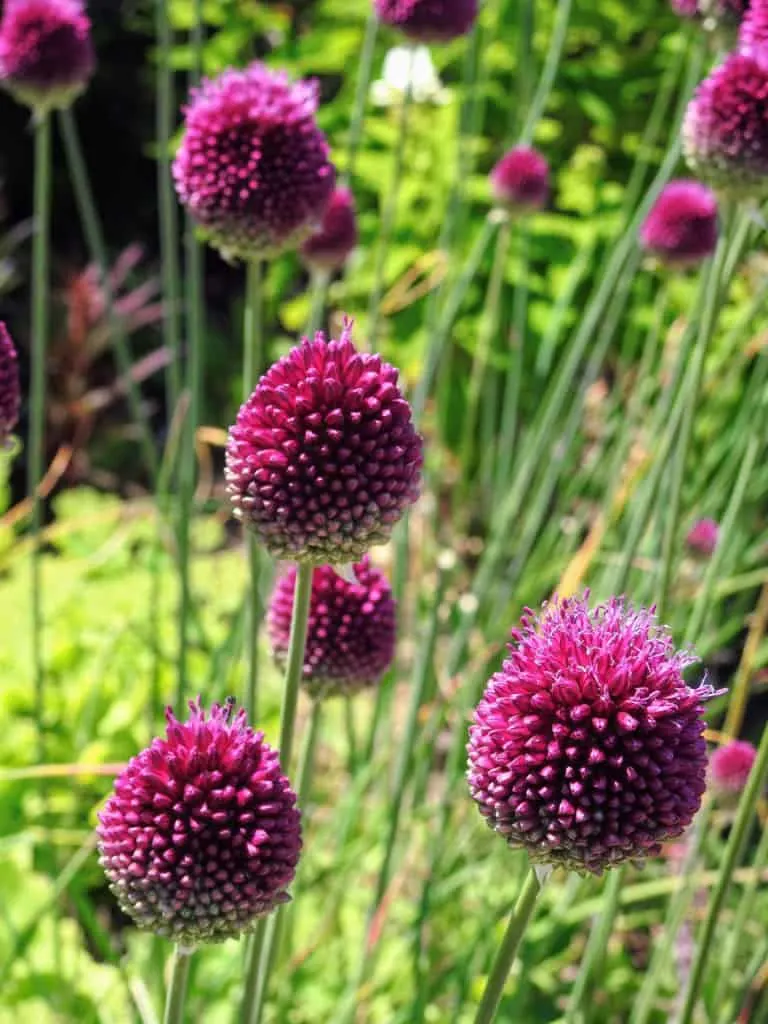
Drumstick alliums are particularly stunningly grown in clusters popping up throughout the low perennial border.
In late spring to early summer, the 1-to-2-inch clover-like purple blooms top sturdy stems that reach 12 to 24 inches tall.
The drumstick alliums naturalize and multiply easily, are perfect for dried flower arrangements, and thrive in zones 4 to 8.
2. Blue Drumstick Allium (Allium caeruleum)
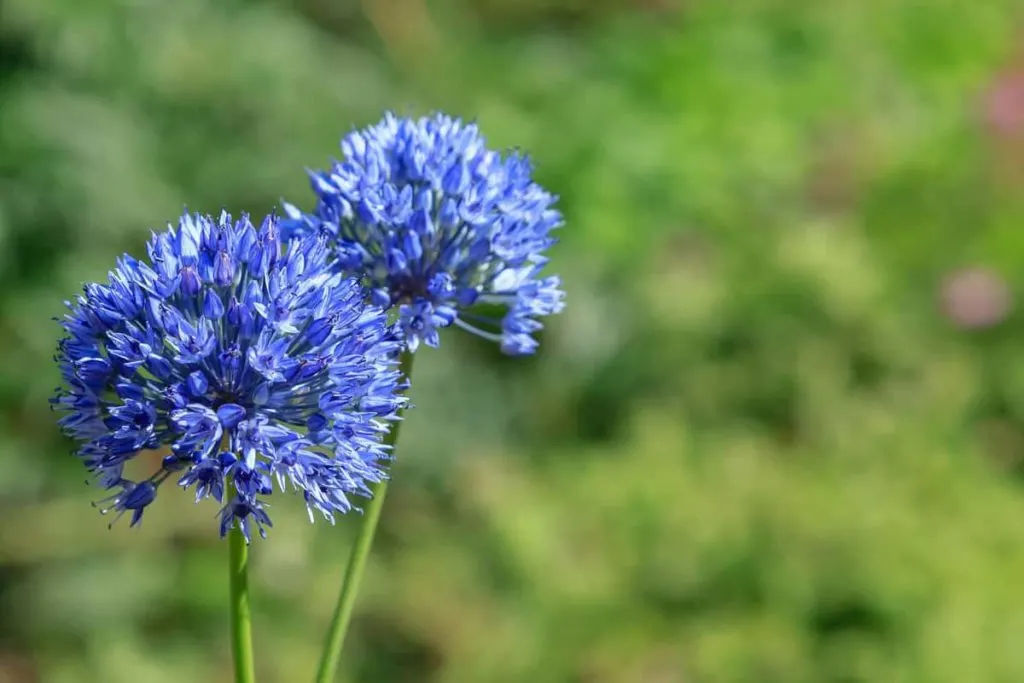
Similar to drumstick alliums, but blue drumstick alliums have lovely flax-blue color. Their tight globe-shaped clusters of star-like flowers have the best impact grown en masse.
The 2-to-3-inch lavender/blue flower balls reach 12 to 24 inches tall in late spring to early summer.
The unique color of blue drumstick alliums is exceptional in cut flower arrangements. Left in the garden, the seed pods create drama into fall and winter, where the bulbs thrive in zones 4 to 8.
3. Purple Allium (Allium atropurpureum)
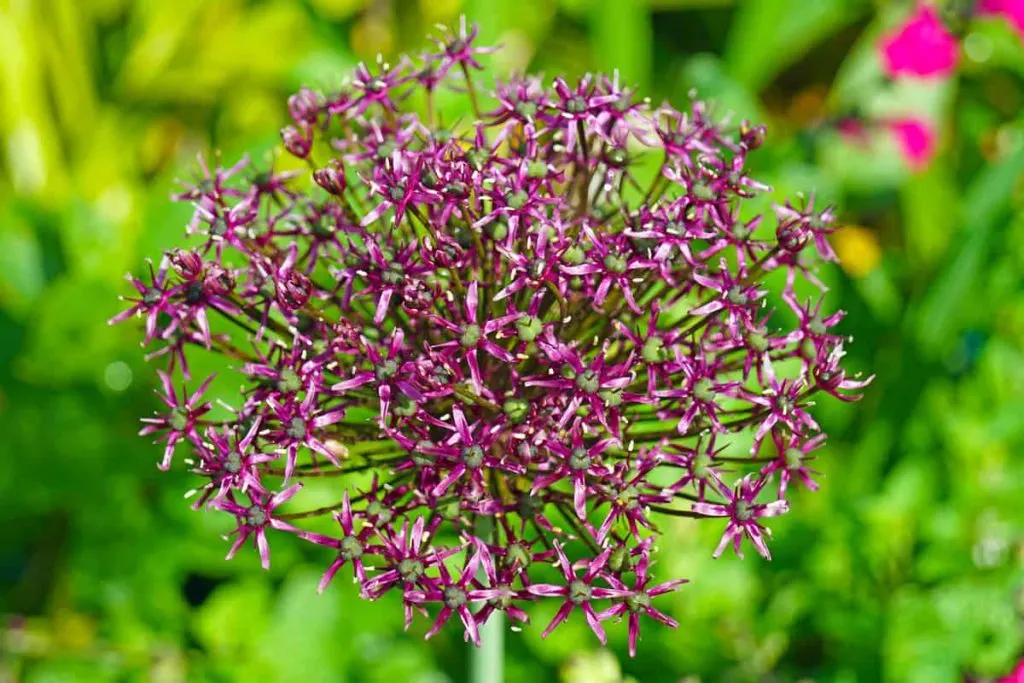
Allium atropurpureum is an heirloom variety of allium boasting deep burgundy star-shaped flowers. The open, flat-bottomed cluster is exceptionally displayed against contrasting-colored flowers and foliage.
The wine-colored flower spheres like it hot, reaching their full bloom in the heat of summer topping out at 24 to 36 inches tall.
Grow with contrasting, drought-tolerant plants for a spectacular low-maintenance perennial display in zones 4 to 8.
4. Mount Everest Allium (Allium stipitatum)
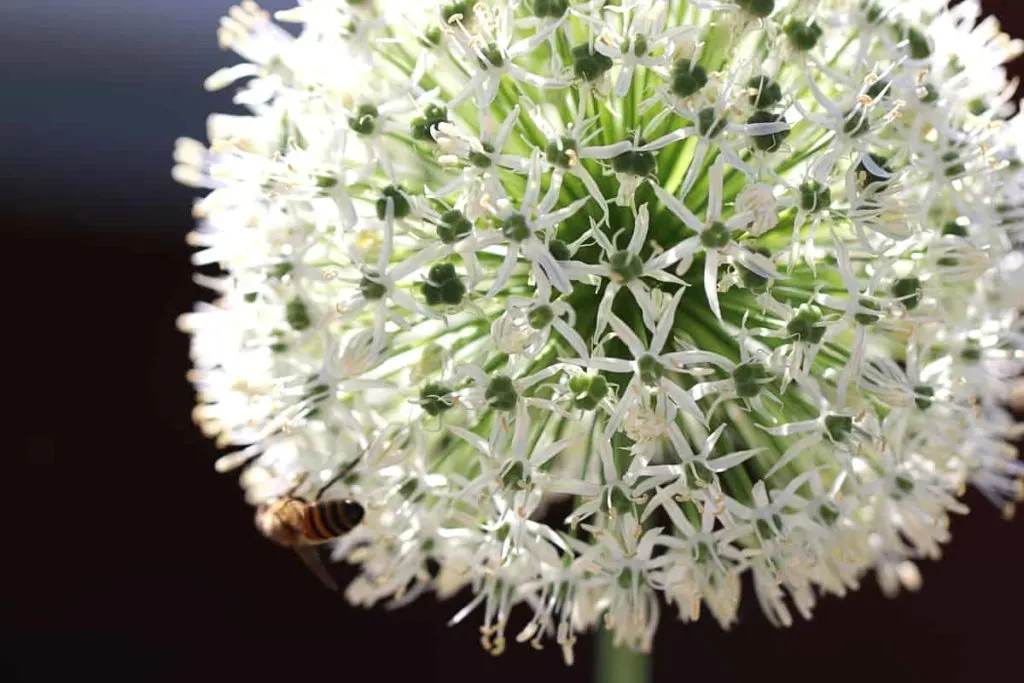
This creamy white allium resembles giant 4-to-6-inch snowballs with their 50+, tightly packed, star-shaped blossoms atop stiff, sturdy stems.
In late spring the large round white flower clusters tower above the perennial bed like glowing orbs at 36 to 48 inches tall.
The surprisingly lovely scent of Mount Everest Allium makes them particularly attractive to hummingbirds and butterflies as well as a welcome cut flower in arrangements, growing in zones 4 to 8.
5. Ornamental Garlic (Allium aflatunense)
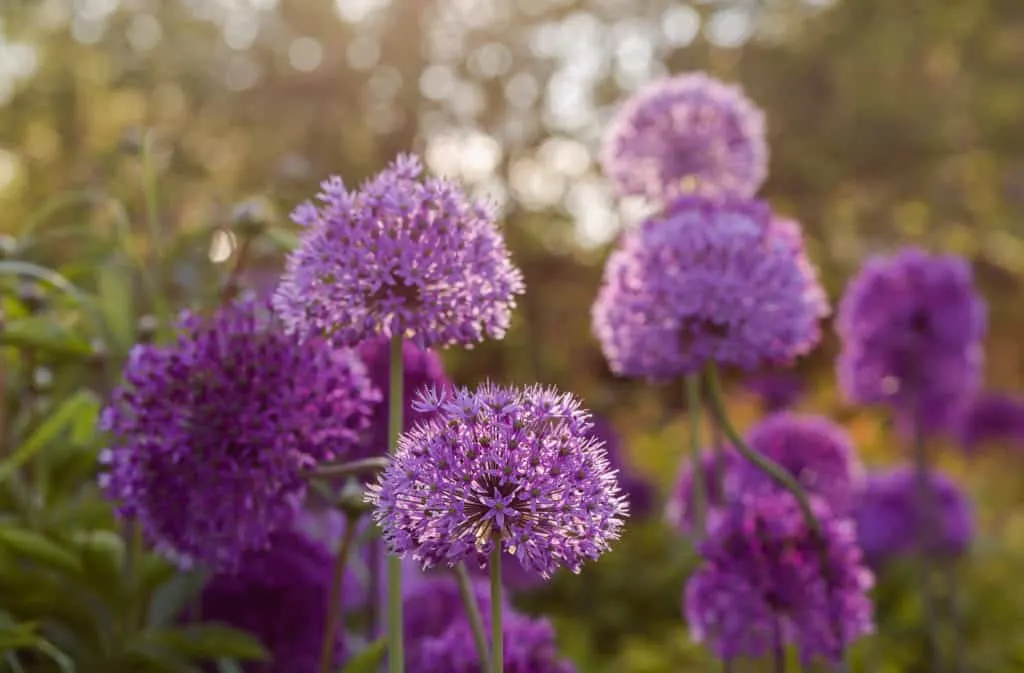
The softer side of ornamental onions, A. aflatunense’s 4-to-5-inch fuzzy spheres are lilac to purple in color and rise above narrow green-blue leaves.
The long-lasting blooms rise 2 to 3 feet tall and arrive in late spring.
Two favorite cultivars are Purple Sensation and Lucy Ball.
The perfect transition to fill the gap between spring and summer, A. aflatunense are gorgeous in the garden and as a cut flower in zones 4 to 9.
6. Mediterranean Bells Allium (Allium nectaroscordum siculum)
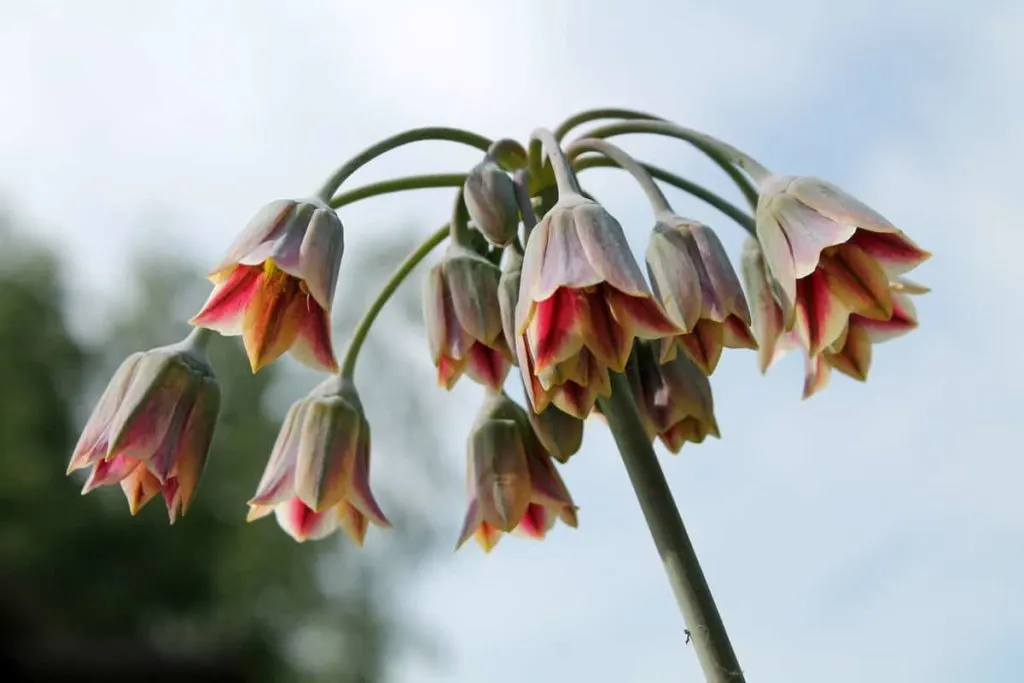
For even more drama, the graceful pendulous blooms of this incredible allium are bell-shaped and wine-colored.
Blooming in early summer, this gorgeous naturalizer attracts hummingbirds with their 36- to 38-inch-tall exotic flowers.
Eye-catching and excellent in rock gardens, perennial borders, and container gardens, Mediterranean Bells are a conversation-starting specimen, hardy in zones 4 to 8.
7. Globemaster (Allium sp.)
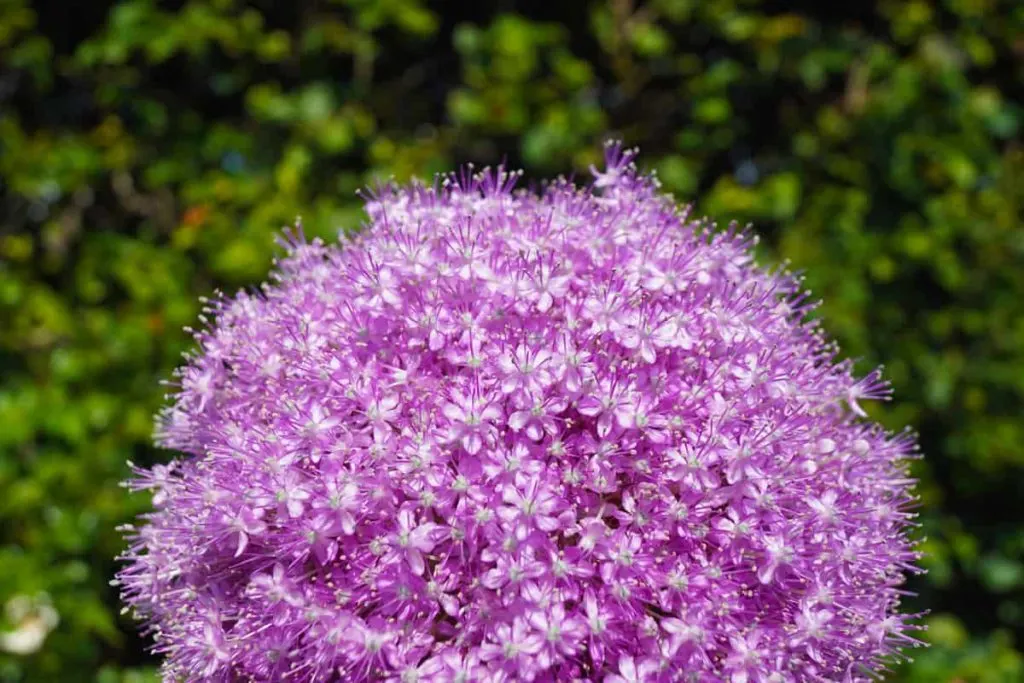
The giant, purple 8-to-10-inch globes are a perfect companion to other super large alliums such as Mount Everest.
From spring to summer, the long-lasting blooms make an imposing statement, especially when grown in clusters of 5 or more as they reach 36 to 48 inches tall.
Particularly useful as cut flowers and in one-of-a-kind dried flower arrangements, the strong stems of these giant globes do benefit from staking in windy areas and they thrive in zones 4 to 9.
8. Nodding Onion (Allium cernuum)
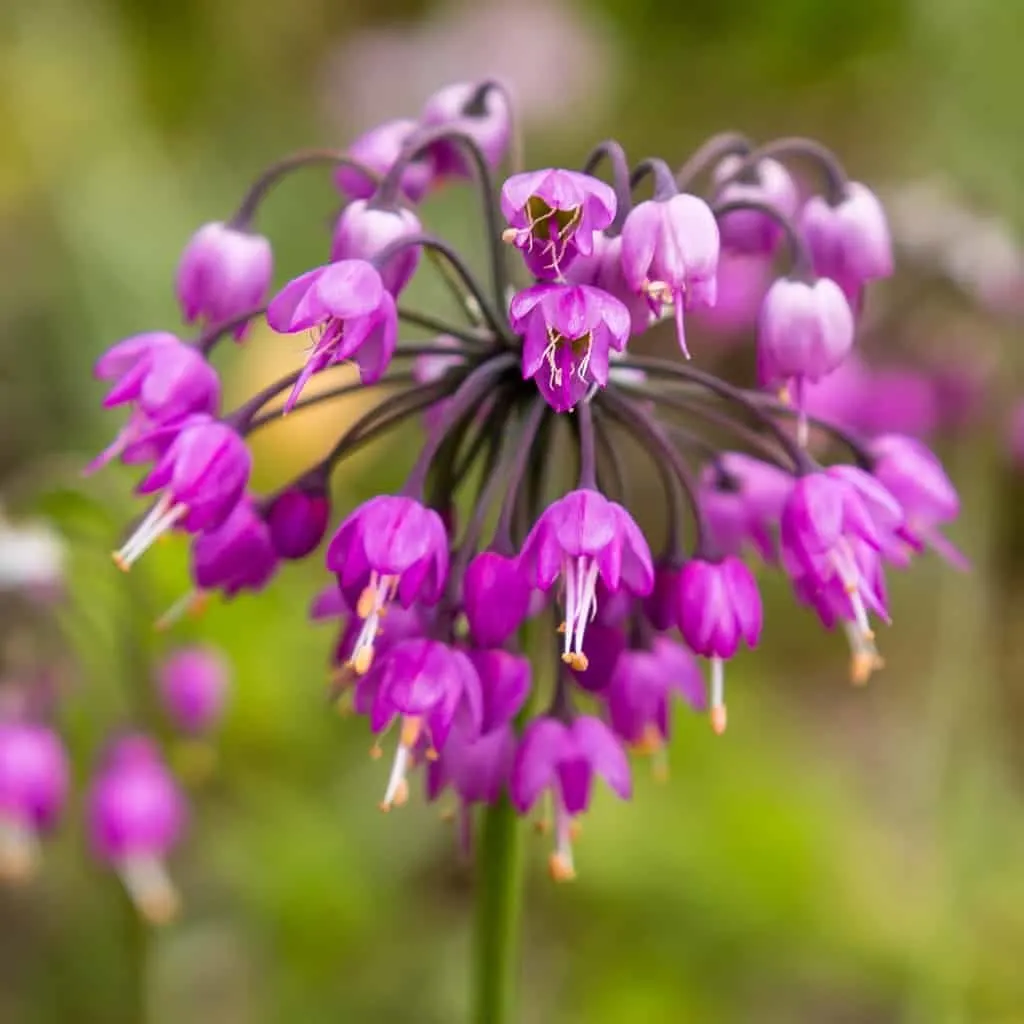
The demure drooping heads of the native nodding onion can be white to rose-colored.
The dancing nodding open pendulous flowers bloom from early to midsummer, are widely adaptable to many growing situations in well-draining soil and can be surprisingly tall reaching 1 ½ feet.
Perfect for naturalizing and excellent for feeding wild bees, nodding onions are hardy to zones as low as zone 2.
9. Schubert Allium (Allium schubertii)
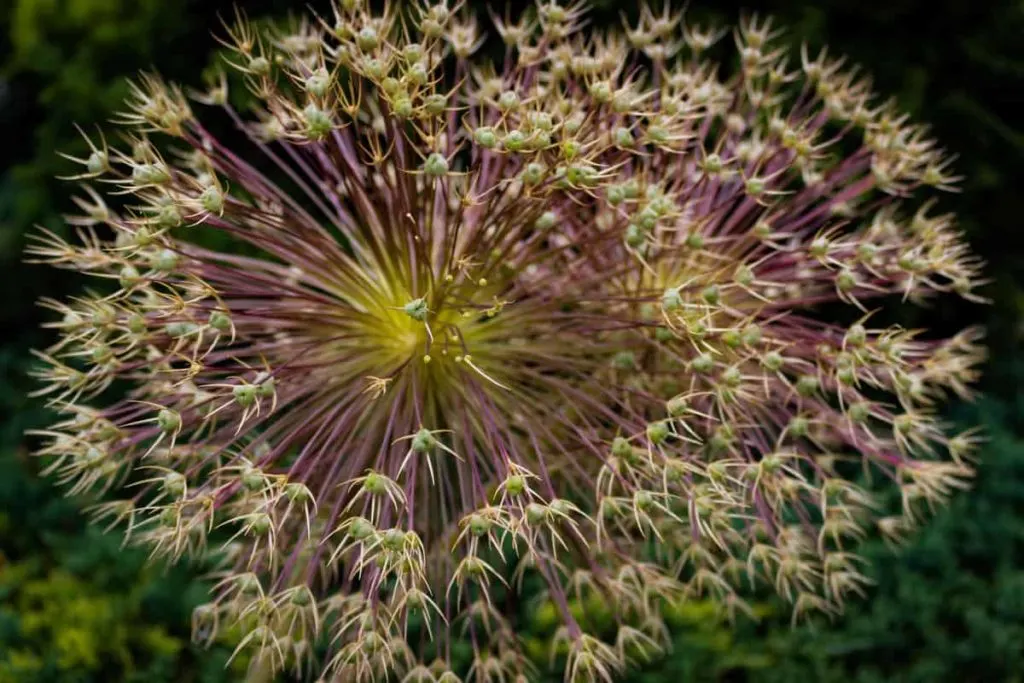
With the fireworks of ornamental onions, this flamboyant onion blooms in phases with its 100 purple florets opening in a starburst fashion.
The early summer blooms make a lasting impression, reaching only 12 to 18 inches tall, and are fantastic grown in large masses.
The movement of the Schubert allium is the perfect accompaniment to hungry visiting bees as the pairing creates hours of early summer entertainment for zones 4 to 8.
10. Giant Onion (Allium giganteum)
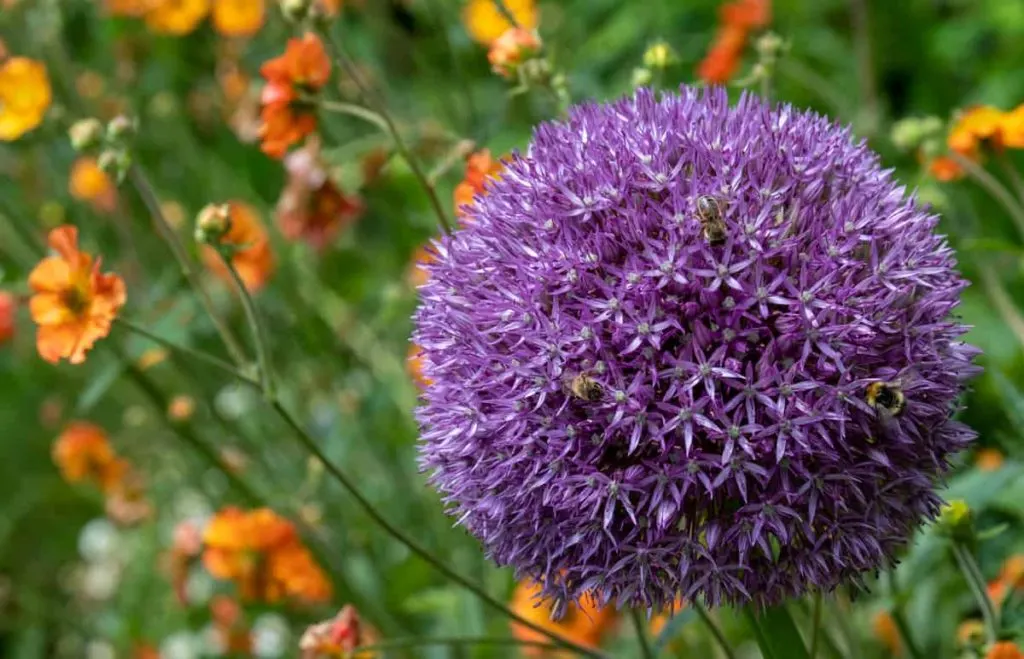
For serious ornamental onion drama, giant onion is a great place to go big with the deep purple flower heads that reach 5 to 10 inches across.
At heights above 3 to 4 feet, the giant round umbels hold their petals long after the late spring blooming season.
A statement in the garden and in dried flower crafts and arrangements, giant onion looks marvelous with ornamental grasses, growing in zones 4 to 8.
11. Star of Persia (Allium christophii)
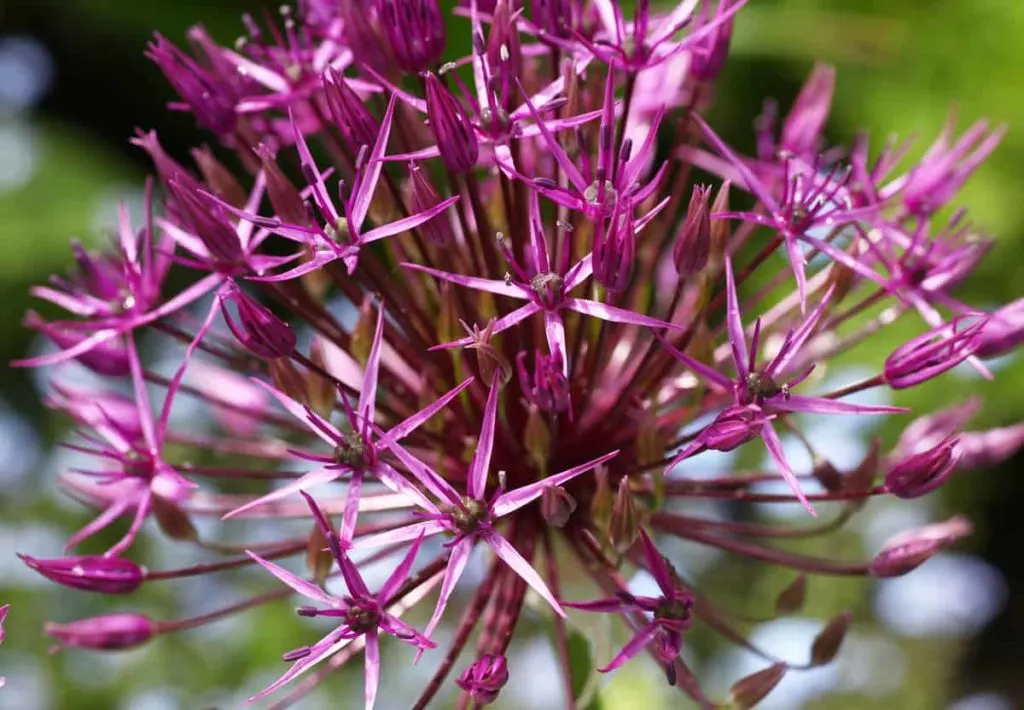
The amethyst star-shaped florets open in a perfect sphere in this unique 8-to-10-inch, open ball-shaped cluster.
Kick off the allium season in late spring with this showstopping, luxurious flower that reaches a reasonable 18 to 32 inches tall in zones 4 to 8.
The incredibly intricate flower spheres dry well, keeping up to 100 individual flowers in their starburst shape, making this an excellent choice to keep in the garden for winter interest or to use in dried flower crafts.
12. Ambassador Allium (Allium sp.)
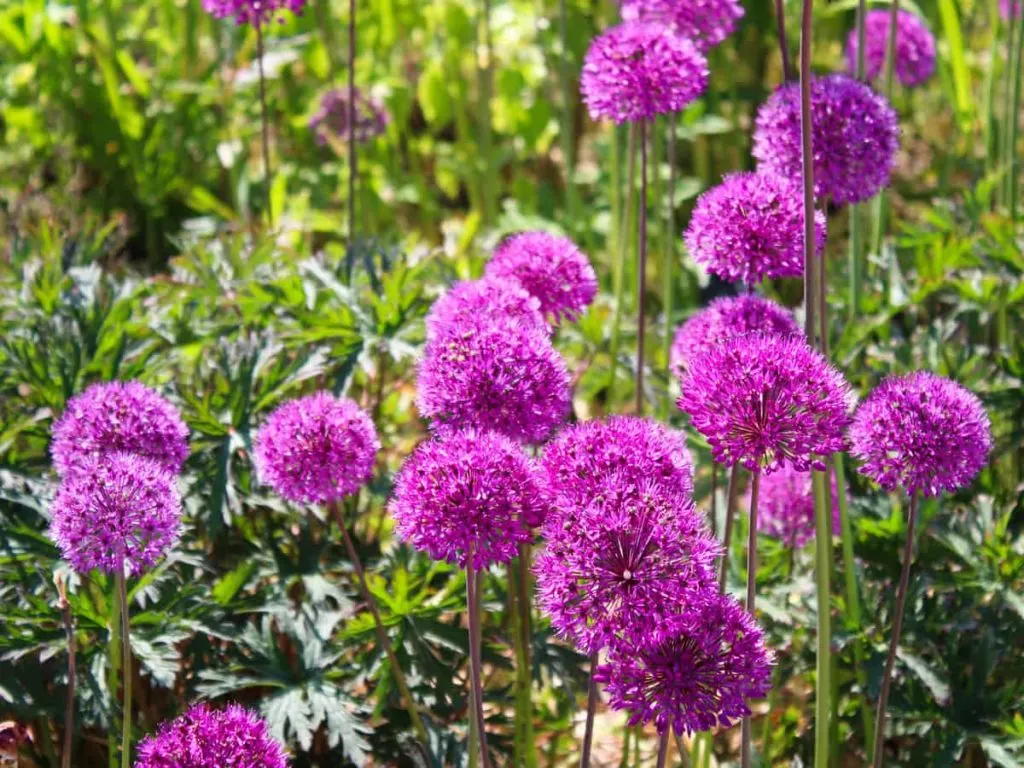
The fuzzy, densely packed florets of the pinkish lilac, globe-shaped 4 to 6 inches are wonderfully elegant on their stout stems.
Exceptionally long-lasting blooms from spring through summer, the prolific pink, purple spheres reach 3 to 4 feet in height.
Hardy in zones 3 to 9, Ambassador allium is a newer variety that is already attracting attention and winning coveted AGM awards.
13. Eros Allium
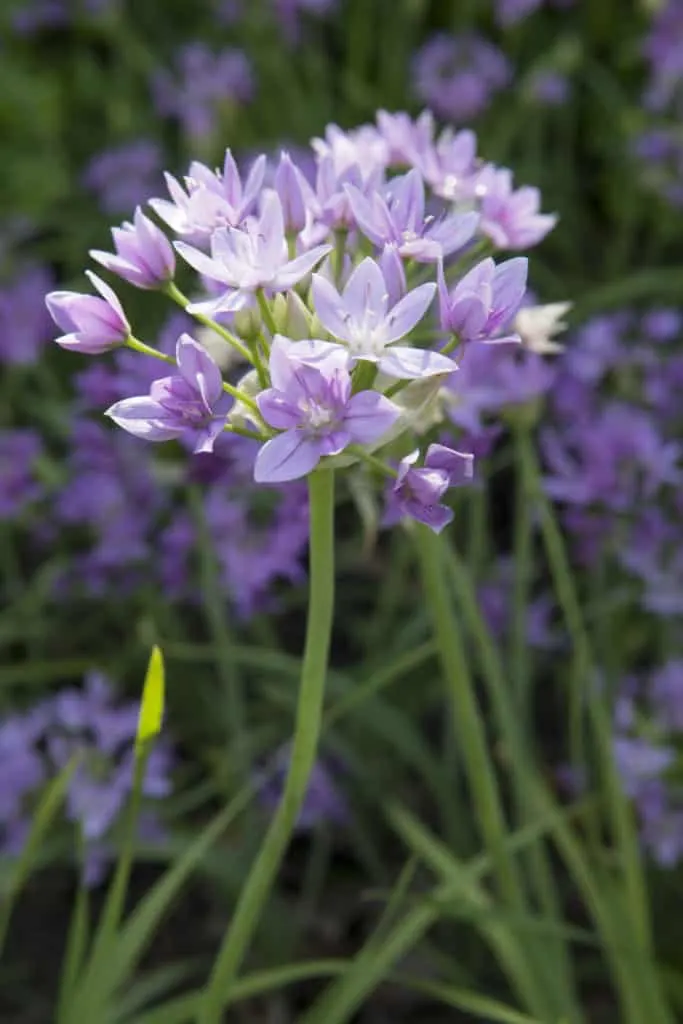
The larger than average star-shaped flowers of Eros allium create a whimsical pale, lilac-colored sphere that reaches up to 4 inches across.
Blooming from late spring through summer, the sturdy plants reach only 1 to 2 feet.
Eros alliums are dainty and elegant making them perfect for growing in large clumps in formal flower displays in zones 3 to 8.
14. Golden Garlic (Allium moly)
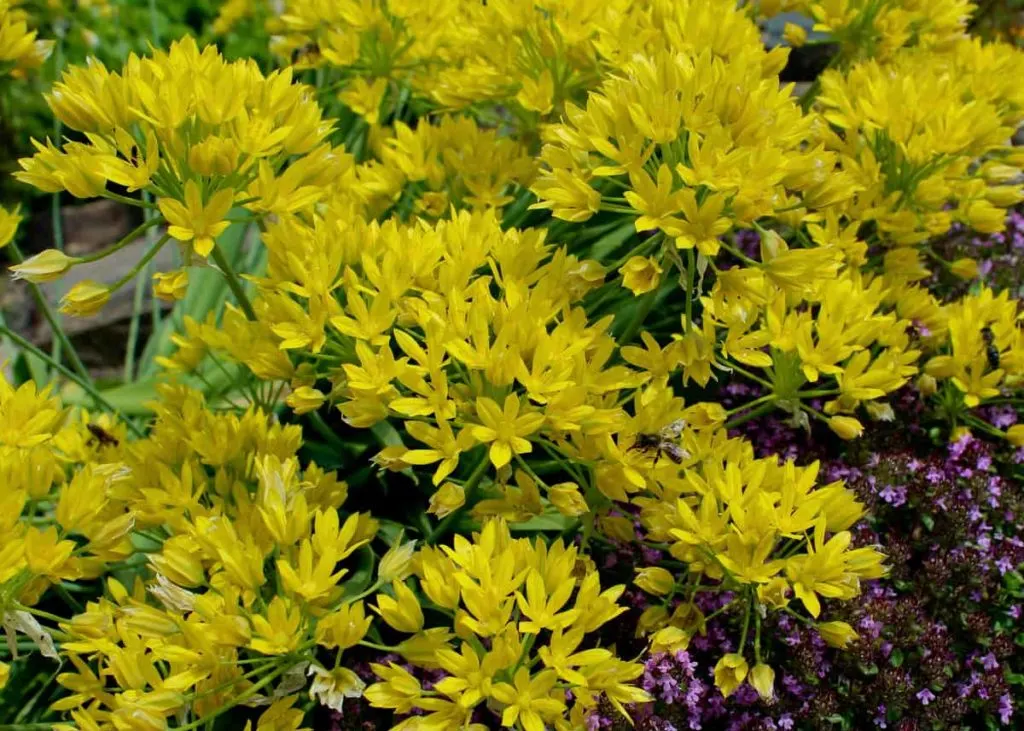
A yellow allium variety bearing 2-to-3-inch clusters of bright yellow star-shaped flowers which rise about their blue-green leaves.
This small ornamental onion is a European native which was considered good luck. It blooms profusely in late spring, and only reaching 8 to 10 inches tall.
Gorgeous in rock gardens and in low borders in zones 4 to 9. The bright yellow blooms are long-lasting with frequent visitors of butterflies and hummingbirds.
15. Giant Red Allium (Allium karataviense)
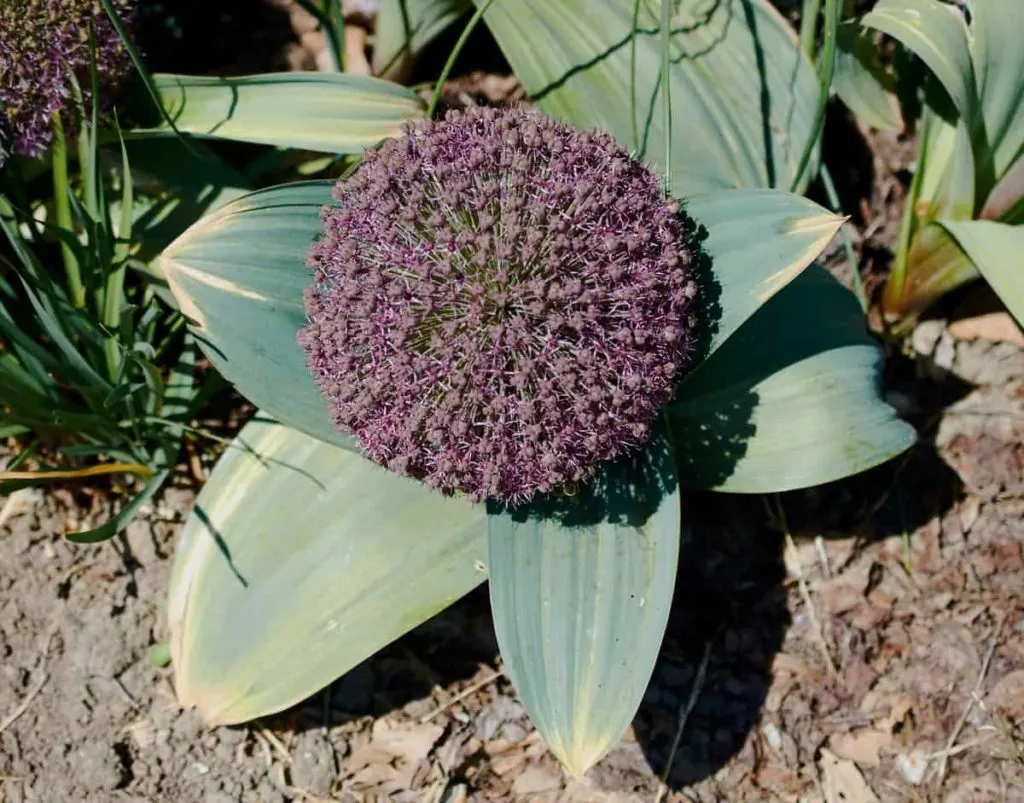
All the drama without the height, giant red allium is perfect for pots with its softball-size blossom in shades of pink.
This uniquely short variety reaches only 8 to 10 inches framing its 4-inch giant blossom with super-wide foliage.
Hardy in zones 5 to 9, red giant allium has a light pleasant fragrance and looks great at the front of borders to show off its huge blooms.
This fall, plant a spectacular finale to your parade of spring-blooming bulbs with showstopping late spring and early summer blooming alliums.
Read Next: How To Care For Allium Bulbs After Blooming
